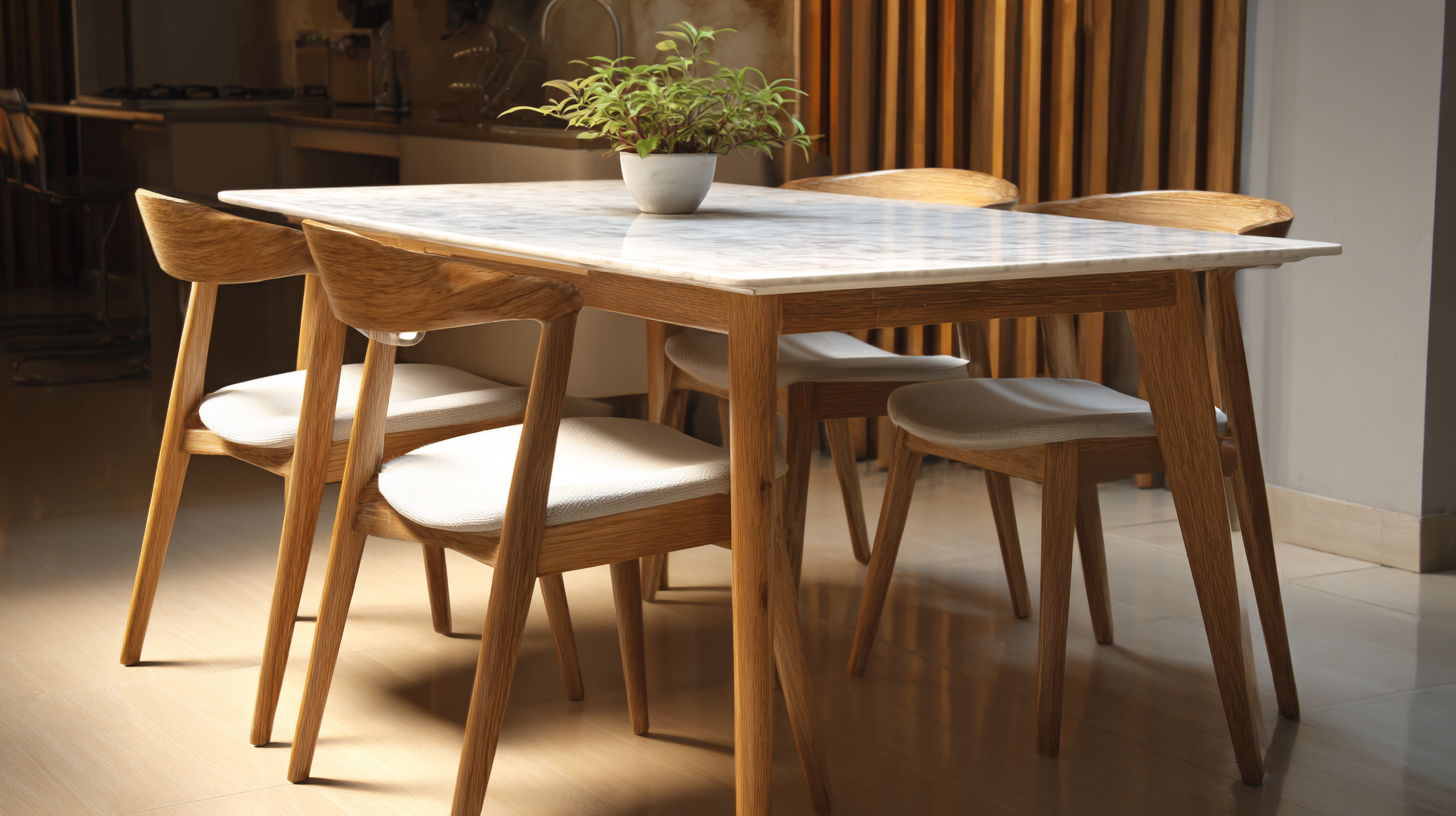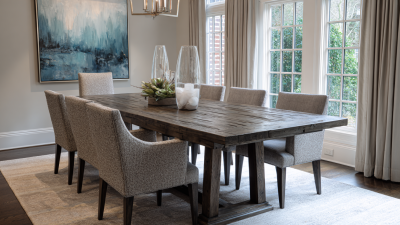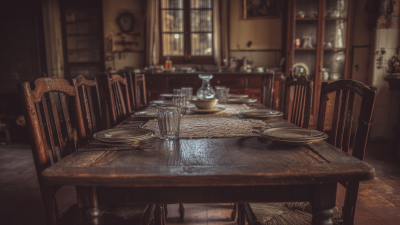When it comes to creating a warm and inviting atmosphere in your home, the choice of a Dinning Table is paramount. According to renowned interior designer Emma Harris, "The Dinning Table is more than just a piece of furniture; it’s the heart of the home where memories are created." With multiple styles, sizes, and materials available, selecting the perfect Dinning Table can be daunting.
In this article, we will explore what constitutes a Dinning Table, the various design options that cater to different aesthetics and lifestyles, and provide essential tips on how to choose one that aligns with your personal vision for your space. Whether you're hosting a family dinner or enjoying a quiet meal on your own, the right Dinning Table can elevate your dining experience and enhance your home's overall ambiance. Let’s delve into the key considerations that will guide you in making an informed decision for this fundamental piece of furniture.

When selecting a dining table, it’s essential to understand the various types available on the market. Round tables are perfect for smaller spaces and create an intimate atmosphere, making them ideal for family dinners or gatherings. They allow for more flexibility in seating arrangements and can accommodate a wider range of chair styles. On the other hand, rectangular tables are classic and functional, fitting well into larger dining rooms. They often come with extensions, allowing you to adjust seating capacity for special occasions.
When choosing the perfect dining table, consider the material and style that complements your home decor. Wooden tables offer a warm and timeless look, while glass tables provide a modern and spacious feel. Additionally, don’t overlook the table height. Standard dining tables are usually 28 to 30 inches high, but counter-height tables can add a casual and contemporary flair.
**Tips:** Always measure your dining space to ensure the table fits comfortably, leaving enough room to move around. Also, think about the table's use; if you often host larger groups, opt for a table with extendable features for versatility. Finally, choose a surface that is easy to maintain, especially if you have kids or entertain frequently.

When selecting the perfect dining table for your home, understanding the key materials used in its construction is essential. Wood is the most traditional choice, offering warmth and character. Solid wood tables are durable and can last a lifetime, but they require regular maintenance to prevent scratches and water damage. On the other hand, engineered wood options, like MDF or particleboard, provide a more affordable alternative with a similar aesthetic. However, they may not be as sturdy and can be vulnerable to moisture.

Metal and glass are also popular choices for modern dining tables. Metal frames add an industrial edge and are incredibly durable, yet they may feel cold or uncomfortable without the right design elements. Glass tops create an airy feel and can make small spaces appear larger, but they require frequent cleaning and care to avoid fingerprints and smudges. Each material has its own advantages and disadvantages, so considering your lifestyle and aesthetic preferences is crucial in making the right choice for your dining area.
When selecting the ideal dining table for your space, size is a critical factor that can significantly influence both aesthetics and functionality. First, assess the dimensions of your dining area to ensure a proper fit. A common guideline is to allow at least 36 inches of space between the table and walls or furniture, which provides sufficient room for movement and chairs.
Tips: Measure your space carefully, taking note of any permanent features that could affect table placement, like windows or radiators. Additionally, consider the number of people you typically host. A table for four should be about 48-60 inches long, while one for six will generally range from 60-78 inches.
Another aspect to ponder is the shape of the table. Rectangular tables are great for larger spaces while round tables fit snugly into smaller areas. If your dining area is limited, consider a drop-leaf table that can be expanded when needed.
Tips: When shopping, visualize how the table will work with your existing furniture. Use painter’s tape to outline the dimensions on the floor, giving you a clearer perspective on how the size will impact your space. It's all about creating a harmonious setting that invites gathering and enjoyment.
As we approach 2025, dining table design trends are predicted to embrace a blend of functionality and artistic expression. Interior designers highlight several key styles that will dominate the market, focusing on biomorphic designs that incorporate organic shapes inspired by nature. These tables not only provide a unique aesthetic but also encourage a more inviting dining experience.
Alongside these organic forms, statement pieces are becoming increasingly popular, as homeowners seek to create focal points that reflect their personal style.
Color and texture will also play significant roles in the dining table trends of 2025. Rich fabrics and bold colors are making waves, reminiscent of the vibrant choices seen in the living room furniture trend. Tables featuring intricate patterns or hand-painted details will allow for individuality and creativity. Additionally, the use of mixed materials, such as marrying wood with metal or glass, is set to add a contemporary twist to traditional dining settings. Designers emphasize that these trends not only enhance the dining experience but also contribute to the overall ambiance of the home.
When considering the cost of opening a restaurant, one must account for a variety of startup expenses that can vary widely based on location, concept, and design. Key components include leasing or purchasing a space, kitchen equipment, dining furniture, decor, and initial inventory. Notably, the type of dining table you choose can significantly impact your budget. A well-crafted dining table not only enhances the dining experience but also sets the tone for your restaurant's ambiance.
**Tips:** When selecting dining tables for your restaurant, consider materials and styles that complement your theme while remaining practical for high-traffic usage. For instance, hardwood tables may offer durability, while laminate surfaces can be cost-effective and easy to clean. Additionally, factor in the size of your space—choose tables that maximize seating without overcrowding.
Moreover, don’t overlook the importance of understanding your target audience. Creating a welcoming atmosphere with the right tables can lead to increased customer retention. Be sure to compare various suppliers to find options that meet your budget while ensuring quality and comfort for your guests.






